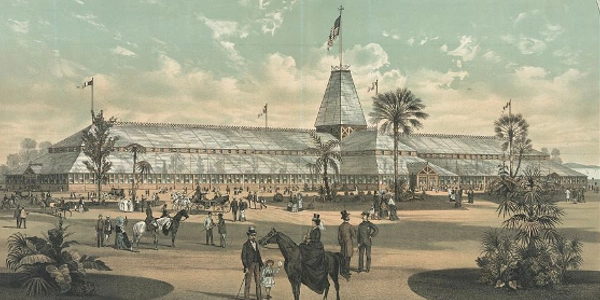Quick List Info

Dates Open - December 16, 1884 to June 1, 1885. Open 168 days per report of Sunday openings by New York Times.
Attendance - 1,158,840 paid, 1,185,025 (paid plus complimentary). There are also sources that list 3,525,000, but it is unknown what that number represents or whether it is accurate.
International Participants - 27 nations, 3 colonies.
Total Cost - Expenses to 1-9-1885 were $1,675,000 with a deficit of $200,000. Later reports, per 1886, list a deficit of around $250,000.
Site Acreage - 249 acres.
Sanction and Type - Prior to the Bureau of International Exhibitions. Would be considered today a Registered Event of the smaller kind like those held on the 5 year of the decade. Congress did support the exposition and invite nations to participate.
Ticket Cost - Adults at 50 cents, children at 25 cents, and school children at 15 cents.
Photo top center: Horticultural Hall at the Cotton Centennial 1884-5, 1884, Thomas Hunter. Courtesy Library of Congress. Column Top: Illustration showing Uncle Sam greeting women from participating nations at the World's Industrial and Cotton Centennial Exposition, 1884, Joseph Ferdinand Keppler. Courtesy Library of Congress. Column Bottom: Historic New Orleans wharf scene along the Mississippi River, 1884, Currier and Ives. Photo courtesy Library of Congress.


Other Histories of World's Fairs to Check Out










